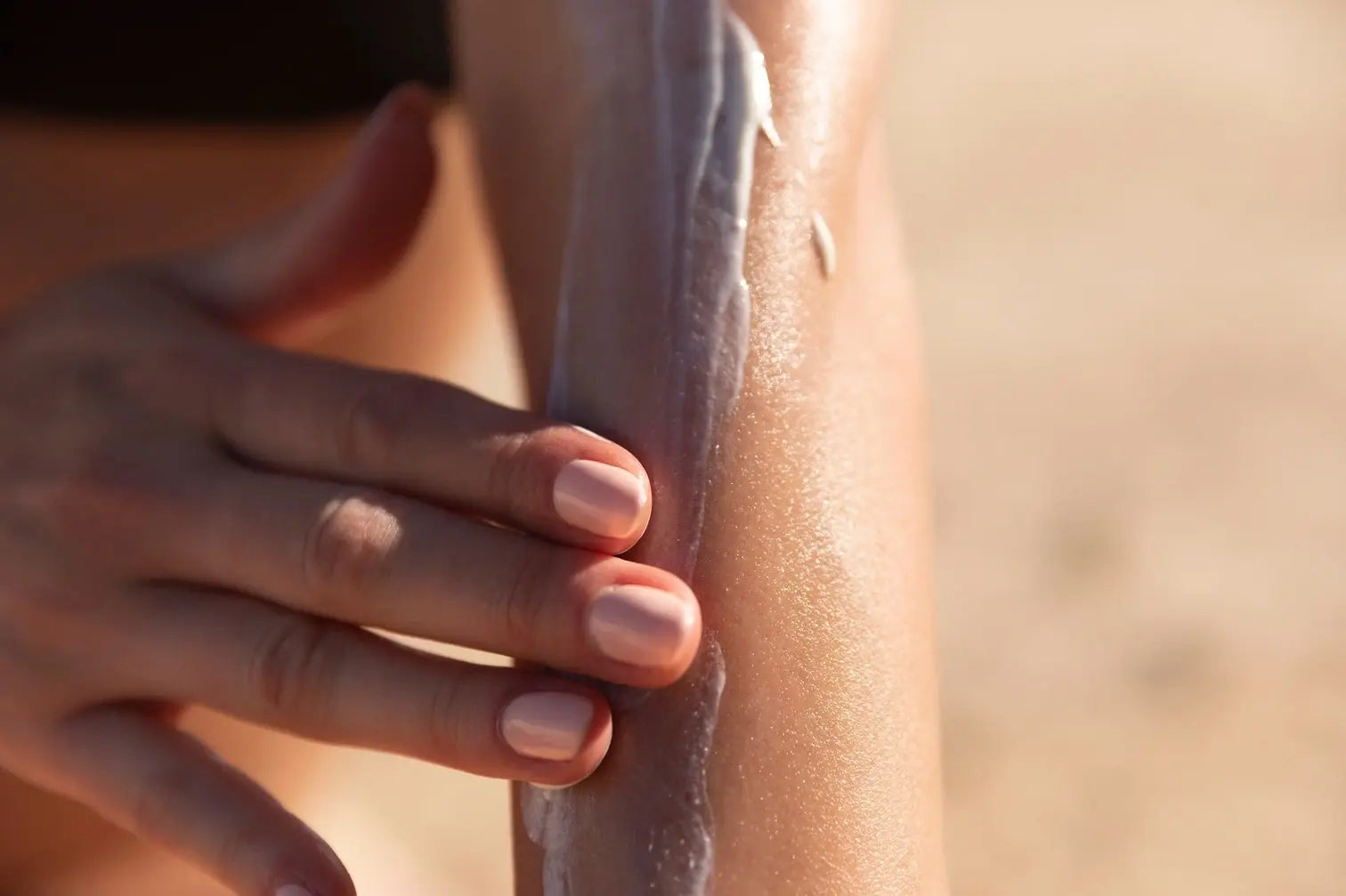How do UV rays damage skin?
How do UV rays damage skin?
How does sunscreen protect your skin?
How does sunscreen protect your skin?
How does sunscreen work? How does it protect your skin from UV radiation?
How does sunscreen work? How does it protect your skin from UV radiation?
What happens when you don’t apply sunscreen enough?
What happens when you don’t apply sunscreen enough?
How long does sunscreen last on skin? How many hours?
How long does sunscreen last on skin? How many hours?
How long does SPF 50 last?
How long does SPF 50 last?
Can you still get a tan with sunscreen on?
Can you still get a tan with sunscreen on?
Does sunscreen block Vitamin D?
Does sunscreen block Vitamin D?
Does anything block vitamin D?
Does anything block vitamin D?
How long do you need to be in the sun to get enough vitamin D?
How long do you need to be in the sun to get enough vitamin D?
- The amount of UV radiation that reaches the skin depends on many factors including skin tone, season, pollution, sunscreen application, and length of exposure.
- Sunscreen has two large categories of ingredients; inorganic blockers (physical sunscreen) and organic absorbers (chemical sunscreen).
- UVB radiation is responsible for tans and sunburns and some skin cancer while UVA radiation increases the appearance of wrinkles, age spots, also increasing the risk for some other forms of cancer.
- Sunscreen should be regularly applied as it is frequently washed or rubbed off.
- Sunscreen effectiveness increases with SPF and decreases with activity and time.
- Vitamin D levels are likely not impacted by the value of SPF sunscreen applied, as the skin absorbs more than enough UVB radiation for vitamin D synthesis.
- The length of sunlight exposure required to produce enough vitamin D can depend on the season and the amount of skin exposed.
- The amount of UV radiation that reaches the skin depends on many factors including skin tone, season, pollution, sunscreen application, and length of exposure.
- Sunscreen has two large categories of ingredients; inorganic blockers (physical sunscreen) and organic absorbers (chemical sunscreen).
- UVB radiation is responsible for tans and sunburns and some skin cancer while UVA radiation increases the appearance of wrinkles, age spots, also increasing the risk for some other forms of cancer.
- Sunscreen should be regularly applied as it is frequently washed or rubbed off.
- Sunscreen effectiveness increases with SPF and decreases with activity and time.
- Vitamin D levels are likely not impacted by the value of SPF sunscreen applied, as the skin absorbs more than enough UVB radiation for vitamin D synthesis.
- The length of sunlight exposure required to produce enough vitamin D can depend on the season and the amount of skin exposed.
- https://www.cancer.gov/news-events/cancer-currents-blog/2015/no-sunscreen
- https://www.ncbi.nlm.nih.gov/pmc/articles/PMC3400707/
- https://khn.org/news/article/skin-cancer-risk-overlooked-in-dark-skin/
- https://www.cosmeticsbusiness.com/news/article_page/What_is_organic_and_inorganic_sunscreen/153042
- https://www.fda.gov/radiation-emitting-products/tanning/ultraviolet-uv-radiation
- https://www.skincancer.org/risk-factors/uv-radiation/
- https://www.who.int/news-room/questions-and-answers/item/radiation-ultraviolet-(uv)
- https://www.skincancer.org/skin-cancer-prevention/sun-protection/sunscreen/
- https://www.colorescience.com/blogs/learn/how-does-sunscreen-work-to-protect-your-skin
- https://ods.od.nih.gov/factsheets/VitaminD-HealthProfessional/
- https://www.skincancer.org/blog/sun-protection-and-vitamin-d/
- https://healthyeating.sfgate.com/much-skin-needs-exposed-vitamin-d-8162.html
- https://www.hsph.harvard.edu/nutritionsource/vitamin-d/
- https://pubmed.ncbi.nlm.nih.gov/30992519/
- https://www.cancer.gov/news-events/cancer-currents-blog/2015/no-sunscreen
- https://www.ncbi.nlm.nih.gov/pmc/articles/PMC3400707/
- https://khn.org/news/article/skin-cancer-risk-overlooked-in-dark-skin/
- https://www.cosmeticsbusiness.com/news/article_page/What_is_organic_and_inorganic_sunscreen/153042
- https://www.fda.gov/radiation-emitting-products/tanning/ultraviolet-uv-radiation
- https://www.skincancer.org/risk-factors/uv-radiation/
- https://www.who.int/news-room/questions-and-answers/item/radiation-ultraviolet-(uv)
- https://www.skincancer.org/skin-cancer-prevention/sun-protection/sunscreen/
- https://www.colorescience.com/blogs/learn/how-does-sunscreen-work-to-protect-your-skin
- https://ods.od.nih.gov/factsheets/VitaminD-HealthProfessional/
- https://www.skincancer.org/blog/sun-protection-and-vitamin-d/
- https://healthyeating.sfgate.com/much-skin-needs-exposed-vitamin-d-8162.html
- https://www.hsph.harvard.edu/nutritionsource/vitamin-d/
- https://pubmed.ncbi.nlm.nih.gov/30992519/



